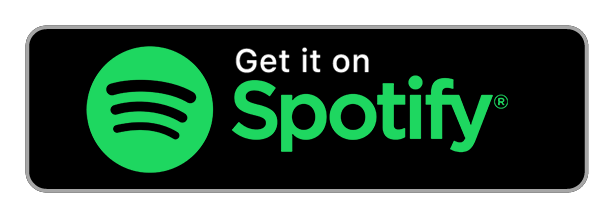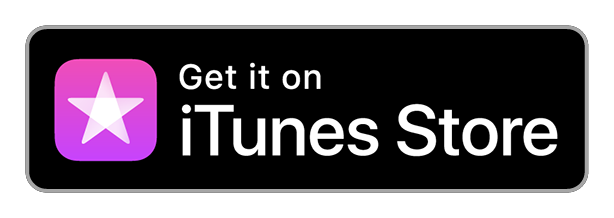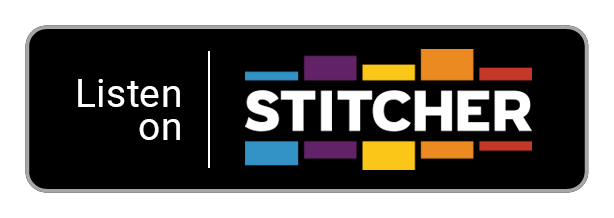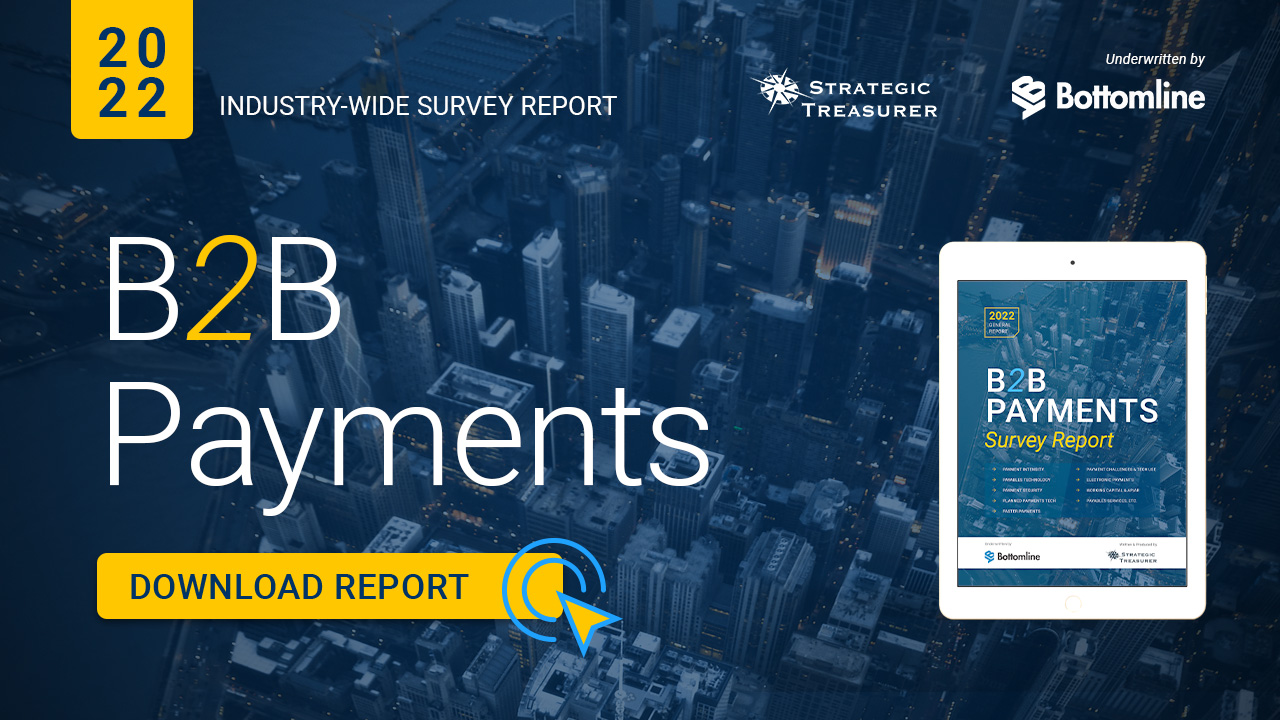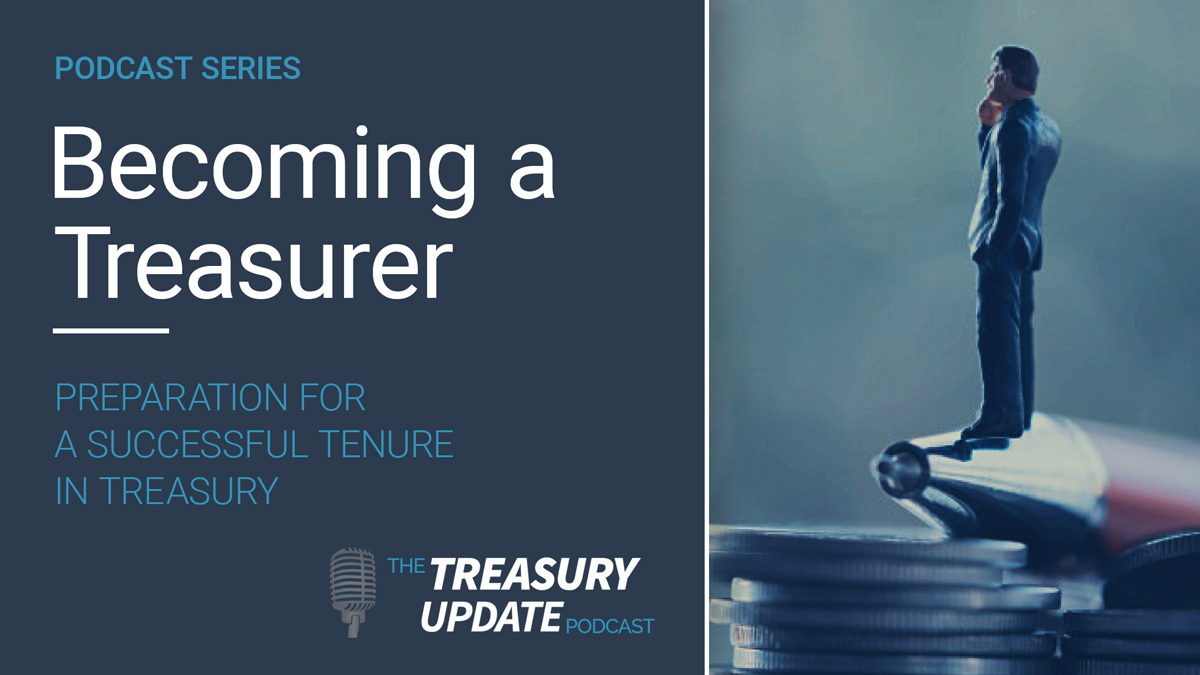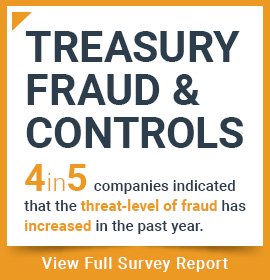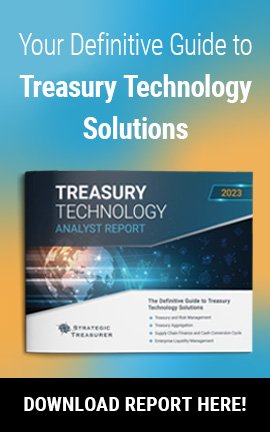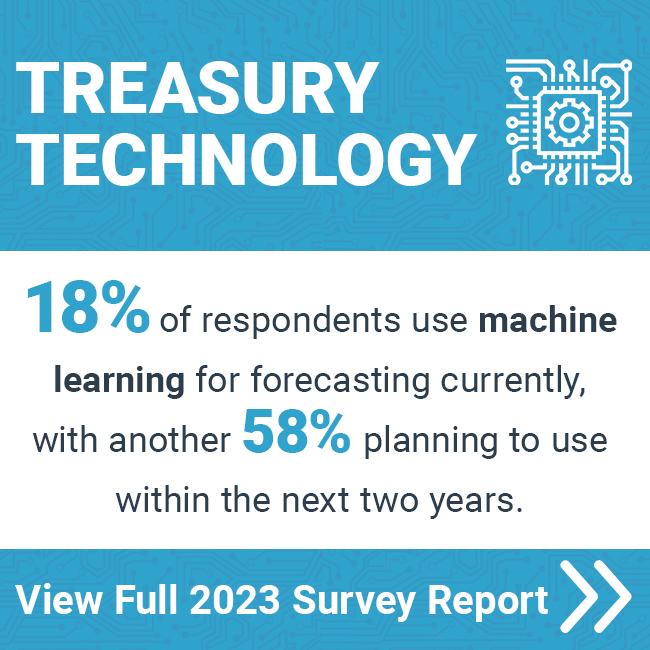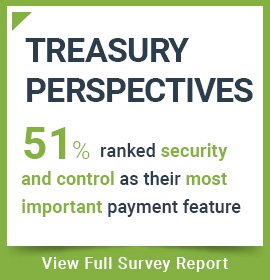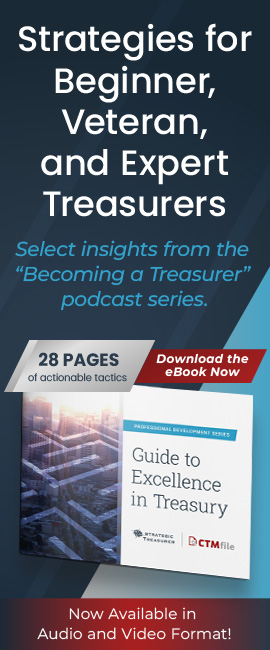
Episode 227
Top AP Challenges All Center Around Efficiency:
2022 B2B Payments Survey Results
Paul McMeekin is VP of Marketing, Paymode-X for Bottomline Technologies
Find more information in this article: B2B payments survey shows big strides from big businesses
Host:
Craig Jeffery, Strategic Treasurer


Speaker:
Paul McMeekin, Bottomline


Subscribe to the Treasury Update Podcast on your favorite app!
Episode Transcription - Episode #227 - Top AP Challenges All Center Around Efficiency: 2022 B2B Payments Survey Results
Announcer 00:04
Welcome to the Treasury Update Podcast presented by Strategic Treasurer, your source for interesting treasury news, analysis, and insights in your car, at the gym, or wherever you decide to tune in.
Craig Jeffery 00:18
Welcome to the Treasury Update Podcast. This is Craig Jeffrey, your host today. I’m joined today with Paul McMeekin from Bottomline technologies. Paul, welcome to the Treasury Update Podcast.
Paul McMeekin 00:29
Yeah, thanks, Craig. And thanks for thanks for having me today.
Craig Jeffery 00:32
So for those who are listening in the shownotes, we have some links to the survey report. Bottomline underwrote the B2B payments survey report again in 2022. There’s a lot of good information. So look there to download the full report. And, Paul, as we as we get started, maybe it’d be helpful if you just give a little bit about your background and role at Bottomline.
Paul McMeekin 00:54
Yeah, absolutely. And so as Craig said, my name is Paul McMeekin, I’m the VP of Marketing for PaymodeX at Bottomline, and so question is immediately what is what is PaymodeX? So, PaymodeX is a comprehensive AP automation platform. And we really target our data finance departments, and those with companies have $50 million to a billion dollars in revenue. And we’d like to think that we make modern AP processes very attainable, through our robust product and customer experience. And we have half a million businesses on our network. We are a payments network. And we’re trusted by some of the largest banks in the country, and they use that word attainable really intentionally. So we say automation that’s really attainable for your team. And we talked about that generally about our service makes the transition from cheque and paper based process processes today, we really make that go smoothly in our unique offering in our payments offering, particularly premium ACH that drives ROI with with incredible rebates. And importantly, as you’ll find out from the trends in this report, we have thorough fraud protection, so billions of dollars over $300 billion process each year with zero fraud on the network. And our vendor network. And we’ll talk about the network effects a little bit later on, covers all the bases for for the customer. So we were really talking about day one match when someone comes to us how many vendors how many 1000s of vendors are on the network, which they’re paying already to them. So that’s a bit about me, like I said, I run the marketing for PaymodeX at Bottomline here. And that’s about PaymodeX as well, thank you so much.
Craig Jeffery 02:35
And congratulations on passing the half a million mark on the network side. And thanks to bottom line for underwriting this survey, this has been a great survey, just some background for those who are listening, when you download the report, you’ll see that we had responses from over 800 companies around the globe. So this was a significant research project a lot of responses across the globe. So, you know, we’ve continued to run this survey year after year. And you know, the readers can look and see where we captured longitudinal information. So what’s changed over time? So there’s a there’s quite a few key findings in the report, we’re only going to be touching on a few poll. As we look at this. Some of the themes and items that we’ll talk about today are some of the key challenges, particularly around AP. Alright, so we have a lot of people listening are from AP, or from finance or treasury. So what are the top AP challenges, then we’ll look at fraud, which you had already given a little bit of an indication on that at the start, what’s what’s going on? Fraud is real. It’s growing across the, the universe here, and that’s a top concern. So we’ll look at that for a little bit. I’ll ask you some questions there. And then finally, when we look at solving for b2b payments, how are companies evaluated? What’s the criteria they use? And how do we how do we better define that? So there’s a lot of good information that’s come from both the research but also from your experience. So let’s jump in Paul. You know, when we talk about some of the top challenges, many of them centered around efficiency, efficiency is always a big item. Paul, what? What do we mean by that? Maybe you could maybe you could talk us through how you think about efficiency, how corporations should think about that.
Paul McMeekin 04:15
In prep for this, I was skimming through the report again, and just to see like really see how big of a challenge it is. And two things probably stood out to me. So number one is it was about it was 42% of saying timely invoice approval is one of the biggest AP challenges. And the second one was just general overall efficiencies. And there’s a significant opportunity to move from paper to electronic and I think it was 55% of large companies said that’s one of the biggest opportunities, efficiency to me maybe different to efficiency to you. And so when I speak with clients, the way we advise them to think about efficiency, it kind of starts with procurements and ends with permanent in all that invoice ingestion. So if I think of what a manual process may be like today, and so let’s say the set of the procurement, they get the PO out, the vendor invoice comes in, right. And if I say they’re dispersed company, or they’re a manufacturing company, with different plants, things like that, so invoices may be received at plants to maybe received via email may be paper based, and the AP clerk may manually enter and code each invoice into the ERP, then the invoice hard copies get delivered to the plant manager for approval, and the AP clerk batches all these approved invoices up send it to HQ via FedEx, which may take you know, seven days perhaps, right? The batches, get the budget invoices get received the HQ then there’s a file clerk who review these invoices in the ERP for accuracy. And then the invoices get sent to storage, then like the invoice gets posted to the ERP for review, and then there’s a, then they create a check print file. Then a week later, depending on the check run, the checks get printed and pre sold and they get mailed. And then you know a week to 10 days later, the vendor gets paid. That’s a very simple, simple fly through of all the different steps a paper based process may take. And it’s incredibly inefficient. So the break each one down, it’s relying on a couple of things, it’s relying on someone accurately entering information, it’s relying upon speeds like the people are at the location, there’s no approval queue. So if someone’s missing, I can step in as the assistant plant manager and approve that. So that’s the problem we kind of grapple with, with our customers of how do you take this incredibly complex and terribly inefficient process and work with your people to digitize it and automated and so getting those approval workflows down correct are super important. So I may have a level of approval based on spend, you create, you may have a level of approval based on spend on location. And so building those type of workflows into the approval process is super important because it helps them go much more efficient. And really what we come down to efficiency is eliminating what I would say is wasted time. And that old adage of Time is money is really important. So if you think of like, why is it more important now. And so what we’re hearing a lot of particularly in the last, you know, three months is especially United States, that money is no longer free. And so that has huge implications across efficiency or so your cost of capital, your speed to payment, all those sorts of things are very, very important. So when we think about efficiency, we really talk about improving the end customer experience. So there’s probably three things which which we hear a lot about one is speed to payment. So allowing customers to issue a payment and from from anywhere at all, it includes all those things prior to payment. So the invoice ingestion all the way through approval, workflows, everything I mentioned that. The second one is kind of the embedded experience. So kind of the API driven they want they don’t want to go through multiple systems, which increases mistakes, you want to be able to click and approve and pay off from from one system. And also like having this customer first notion of like the value proposition for paying and also accepting virtual card sh premium payments needs to be super strong. And so as we’ve seen inflation skyrocket. In the last 12 months, we’ve seen more and more customers thinking of two things. One is like a really need to make the best use of my people and have them working on super important stuff and not like manually entering things into multiple systems. And also I want to be able to generate rebates back and offset some of those costs that I’m dealing with. So that’s kind of what efficiency means to me. And as I was looking through the report, its cash flow. All seems very important. So I was reading online earlier this week is that, you know, 83% of small businesses fail as a result of cash flow issues. And if we can improve the invoicing, improve the invisible invoicing also helps your suppliers and your vendors, if you can get cash to them in a reasonable manner, and then not having to wait is 35, 50 days for payment because your invoices stuck up for 15, 21 days. It helps your partners as well.
Craig Jeffery 09:43
Well, you said a lot of really, really interesting things there. Your idea as I as I was listening about efficiency is seems very much about end to end the entire process, especially when there’s all these manual handoffs, manual paper items, you know, and it’s interesting because in the survey and I think sometimes we think about efficiency as Oh, is there automation? And is there automation on the handoff part of the process to the other party? And that’s not all right. So if we looked at the research showed that 70% of large businesses make over half of their payments electronically. And that sounds like good success. But if the all the back end is baling wire, paper cuts, moving items, it’s, it’s not anywhere near what you were describing as as efficiency there. So I’d like your, like your comprehensive definition of that. Paul, you mentioned the your payment network, surpassing half a half a million members, you know, when we think about the value of a network, what’s the network effect? I’ll describe it a couple of ways. And this is not meant to be. I’m asking you about it. So it’s not really a commercial about Bottomline. But let’s talk about the power of network because there’s networks and there’s networks of networks, everything from Swift to PaymodeX. To to other networks. But when we think about what’s the network impact, we tend to think of it this way, maybe you can fill in some additional thoughts. There’s How big is the network? What can the network connect to? Right? That’s what like the network of networks? So that’s sort of the same question. The other is, what can you do on the network? Is it a single function? Are there multiple functions? And and I think you’ve alluded to some of that. But how do we think about the network effect and how that impacts how we solve for AP challenges,
Paul McMeekin 11:27
Come back to efficiency, I think the network effect makes your work life much more efficient. If I kind of think through of the network effect examples, right. So even outside of payments, it’s closer, probably ecommerce or eBay, or Etsy or Amazon, when Amazon were building their marketplace. So even like I was looking for, as long as a concert tickets for this weekend, and I was looking at StubHub and Ticketmaster, and I was thinking like, they are like networks that bring buyers and sellers together and thinking through of pay mode acts of like, the value of the product, or the service increases when more people use that product or service. So I think the, the number one thing is the sheer volume of people on the network, so we have half a million members who can get paid digitally. And we have an extended supply network. So it’s kind of like that network of networks, where they’re not on the network. But working through partners, we can pay up to 1.3 million different businesses, right. And so the way we think of the network is is to is you have to bring value to both sides of the network. So value for peers and value for vendors, as well. So we think, you know, pas is rebates is a very strong message of like, how do I get money back in my pocket. So with interest rates rising, there’s you know, there’s all these working capital benefits of of getting rebates back, but it’s not just rebates, right. And so, what we think of is probably three, three things. One is, I call it optionality or single payment file going back to efficiency, like if you give PaymodeX, or whichever network of choice, like one single payment file for your card, your ACH your check, even checking, even check, right? If you give you your network of choice, like one single payment file, and then they can, they can work with your suppliers to simplify work with you, sorry, to simplify the AP process and maximize that supplier acceptance. So from day one, you’d want to look at how many of the vendors are on the network, and your file. So someone comes to us there’s, you know, 35 to 40% of the suppliers or the network that can speak to the size of it. So you don’t have to go through enrollment, you don’t have to like sort of bank accounts, things of that nature. And the second one is embedded technology. So when we speak to both sides of network, both pairs, and vendors are always looking for them better payments within their software. So can I send the invoice through the network? Can I accept payments to the network? Can I receive remittance data through to the network as well. And I think the big one is, customers will talk to us about paying a premium for security and integration to right. So that’s you know, generally, is the network super secure benefits, both pairs and suppliers, of course, also is integrated into my ERP of choice whether I’m using Microsoft D365, which is, you know, broadly applicable across many industries, or something focused on a specific industry, like MRI of the real estate, does my AP technology, you know, integrates super easily with with my ERP of choice. So that’s when we, we talk to vendors, we talk to pair sorry, it’s a very rebate driven story, but also those ancillary benefits as well as the network then then for vendors, you know, what’s the value to the vendors the network so it’s it’s also about automation, reducing those those tasks as well those tasks they have to apply either cash to the bank account. So what we’ve talked about when they say, Hey, why would I pay to accept a payment. And so one of the benefits we talk about especially now in this interest rate, we reduce their sales outstanding, this higher interest rates, environment we’re in which probably not gonna go away, and in the near future, there is a true cost of capital. So that’s kind of like one and that’s probably a point in time thing. But then when we talk about if you’re receiving 5000 payments a day or 5000 payments a week on all these different formats, it’s really hard for your our staff. So the whole efficiency we’re talking about from the AP side, on the AR side, as well. And one of the most untapped benefits the network, I think, on both sides is data. I think, particularly for data, it could be king for the receivables team. But the way they receive the data today in all these different structured or unstructured formats, and perhaps structured formats, pulling it all together, giving them reports on which of their payers are paying when who the chairs real alert systems, that can bring value to the supplier as well. So I think that the biggest thing is the network effects is obviously the size of it, it’s just there’s more people to pay. And it makes it easier for you from an efficiency standpoint, and also from bringing value to both sides network as well. So when we do vendor enrollment, we don’t bash them over the head to take the payment or hold the payments back. If they don’t accept the digital payment would like to do in a manner which benefits you in the long run.
Craig Jeffery 16:34
The size of the network. That’s I think you described that really well on the items about what you can do on the network, you start talking about sharing data and how that’s tied into efficiency, right? If it’s built in. And if you’re doing a bunch of one by one connections with your trading partners, you do 100 trading partners, and there’s 100 different formats of data. That’s a massively complex integration, right to get the data to come in. But you’re saying that the power of the network, I think, as I understand you’re saying is that there’s power in the data and power and the consistency of getting it from multiple, multiple parties. There was one other thing I wanted to ask about that for the transition to the to the next section. But I also wanted to go back to a couple of definitions you had mentioned virtual card and premium Ach, a virtual card is instead of using the same physical card number again, and again, it’s as a payer, you, you provide a one time use card, for a single amount, it goes to the other party, and then it disappears is not used. Again, it’s not used again, by that party, or it’s not recycled for some time. And so it’s a it’s a way of using the card network to make a payment and extinguish the ability for using that for fraud or making it extraordinarily difficult to commit fraud on on a number that disappears. Maybe maybe to explain premium Ach, maybe be good. Contrast that to regular ACH, what’s the what’s the reason for premium? Or how would you describe a contrast those two?
Paul McMeekin 18:06
That’s a great question. So if I just want to get paid from ACH, for example, like you get your faster electronic payments more than cheque, you get your payment notification via email, before you get the payments. And there’s mitigation of risk, right? There’s no, there’s no negative like, there’s no less security because you some basic ACH on the payment acts. So what’s the big difference. And so I think for us is you can request the payment status online, that you can track and train your largest customers do like my pants functionality. And this is what I was talking about earlier, by the data where you can really see which customers are paying one of paying, what trends they had in the last three months, I think the big difference is being able to share critical documents. So you can share your WSU W lines with your peers, there’s different types of data you can dive into, and is also the ability to submit invoices electronically, right. So that’s like a premium function. So you can track the status, you can prioritize customer follow up by invoice, age or amount. So really putting the power into the hands of the Air Force of like, okay, I can prioritize this customer and say by age, so to really reduce your DSL, you can prioritize that that type of follow up. I think that there’s a couple of other ones where there’s kind of unknown unless you’re on the network. One is we call it vendor Connect. It allows parents in the network to find your business. So if I’m looking for something in particular, like I’m looking for landscaping or plumbing services, and when they have those in the network, I can go and find those in the network. So if I’m, if I want to find someone already, and then then we have vendors who advertise in the network, too, so it’s almost like a catalog function almost ongoing, using an outdated term. So those things are like those are the big differences in I think the biggest one is the is the data and customers tell us like being able to prioritize the invoicing receiving that data in a format, which we can use. And each each line item, by itself isn’t, isn’t amazing or astounding, right? But the whole package of the things I listed together there creates a big difference. And that’s why people pay to be on pay to be on the network.
Craig Jeffery 20:27
Now, the last network effect will bring us into fraud. Now you had mentioned, what are some of the elements of the value of a network, it’s, there’s other partners are registered, they’re set up, they’re on boarded, that’s there. And that’s been one of the most significant challenges with fraud, in that every time there’s a change, there’s a big possibility, it’s fraudulent. And the power network is someone’s looking after that for a company. Maybe that’s just a thought leading into it is as we look at fraud and AP losses from the from the research, we certainly saw that a b losses are real, they’re significant. They’re growing. They’re they’re hitting larger companies, more than smaller companies, it was little over 20% of larger companies experienced one or more losses, smaller companies. That was about 11%. If you think about that, we can make hypothesis of why that is criminals have been more intentional about targeting larger companies, because the larger potential payout, now with more automation, they’re just naturally catching smaller companies. That could be a reason for that. But as you look at this, this increase of sophistication, and success on the criminal side, are you finding this to be still surprising or just same level of concern? And how do we how do we think about moving moving past this or reducing this?
Paul McMeekin 21:47
I think that the biggest surprise for me was the amount of large companies who suffer at least one one fraud attempt, right? And nobody’s immune and was all types of different fraud. So I encourage the listeners to check it out. So So I think one of the data points which kind of shocked me was that 8% of the breaches or compromises were connected to insider or employee fraud. And that was kind of one of our, one of our new questions in 2022, here. And so it, it continues to surprise since the question, and it’s also a big level of concern. And so you’re only as strong as the weakest link. So if you are on our network, and we go, we validate every single vendor on there, and one of the big efficiency points, if you go all the way back at the start was validating bank accounts and bank accounts, to suppliers. And so and as you said, once a change come through, is like, what do you do? And it’s in so what we do from a, from a network perspective, just to share some some of the things we do. So there’s also there’s like a phone and email analysis, we look at, you know, what phone numbers, what emails are there? That’s like the super basic stuff, right? Then there’s the actual document review. And there’s the shared threat intelligence, we connected all these different external sources, big banks, users, we have our own propriety, intelligent business data, we do digital identity verification. So I’d say sometimes two factor, some of our customers complained, but that to be honest with you say, oh, what why do I have to have your two factor authentication? And then you explain it to them? And they’re like, oh, okay, I can kind of get it. And I think two factor authentication is commonplace for everything now. So that company will go away. Then there’s your device fingerprinting. So what where in the world is that is advice coming from? We layer in behavioral analytics, and this gets like super sophisticated? When are they doing the transaction, what locations are coming from, even like the time it takes to go through and enter payments. And so if it’s forland, typing like a bunch of words very fast, whereas if it’s a human doing it, there’s like a time expected for someone to do it. So. And then we have like the old fireplace, and there’s like, the digital bank authentication, we’ve all through like, blacklisted, and proxy IPs. And those are the things which they told me I want to talk about. And so there’s like these multiple layers of security. And what I said earlier is you’re only as strong as your weakest link. And so every member on the network is treated the same whether you’re like a $10 billion company accepting payments, or you’re like a small, you know, landscaper accepting payments. You are you go through the same rigorous process, there’s no like, big company process and small can process all the things to get onto the network is the same and it takes a lot of time and effort to keep the network fraud free. And so going back to your question of it is a big concern and we have spent And, you know, I don’t know how I actually don’t know what you sell, but I’m sure it’s significant billions of dollars keeping us keeping it protected. It’s always staying one step ahead of of the fraudsters because as you said it right has become much more sophisticated. And the insider fraud threat is real. In the report, there’s, there’s a nod to working from home and there’s, you know, this this hybrid work world we’re living in, and I have a big concern, not for working home coop because I do myself, it’s those bonds you have and if people are handling money, or if the in the office and someone’s not maybe not looking at the shoulder but you this people around you right in is that with you at home, and there’s there’s less physical barriers of people standing next to you on there’s less like, relationship strength, if you like new to the business and maybe horrible relationship. So I think this, this hybrid work and and moving to work from home, is both a huge benefit to the economy and people’s lives, but also a huge threat and risk to a processor, I expect that, sadly, I expect the insider fraud threat to continue to grow in the next few years because of that strange working from home environment which which it does increase the risk.
Craig Jeffery 26:17
Really good points there, you know, this idea of using networks using tech thinking to the human element of reducing fraud, a lot of lot of good points you made. Certainly some of that comes from the research and some comes from your experience and how people are thinking about it. So great topic to cover, I do want to shift to the solving section. So what’s what’s the evaluation criteria that we use for evaluating new automation solutions? That was those are some of the things that we asked what how do companies look at different technology tools, solution sets? Now, Paul, as you know, quite a bit of its focused on efficiency. You have talked about some of those already. But what did we learn through the through how corporations, AP groups, Treasury groups are evaluating these types of solutions? What are they? What are they really seeking?
Paul McMeekin 27:10
This is where like, the data and my real life experiences kind of divert, what the data tells us is that the top three decision criteria for making a change of security, ease of use, and breadth of functionality. And when potential customers come and speak to us, they don’t assume they just assume security is taken care of. So it’s not like, they don’t come to us because of oh, we have zero fraud or like, hey, what do you do for security? It’s never the first question. It’s always in there. But when when they typically come to us is because they have a business plan to solve a business problem. They talk about efficiency they talk about, we want to pay our vendors digitally. And security is like a third or fourth on the list. It’s always important, but it’s never number one. So I found it fascinating that the security is the number one thing that they look for. So maybe it’s like a who we really, really care about, it’s number one. But when you speak to vendors, like PaymodeX, it’s like we have to assume and we we don’t lead with that. So that was I thought was kind of fascinating that the difference between like the real life and the data there. And this is the mindset we’re in. So if the I was trying to rationalize, like the data, it’s, it’s like the real life. And if you’re answering questions around fraud and fraud losses, maybe it comes to the top straightaway, a little bit of confirmation bias almost. So one of the things which I did see in the, in the data and in real life is this desire for embedded banking has grown. So having that technology inside, like the platform you use every day, is super important. Being able to make payments from the same platform as your, your invoice solution is super important. And that’s what we see on a on a day to day basis. But like I said, this as you know, security, ease of use, which we talked about a lot at the start making the customer experience better, not having to have multiple clicks to multiple systems and breadth of functionality. And I think breadth of functionality comes in, in two or three ways. One is like I get the procure to payment functionality, all the all the features I need particularly fire. If I’m in a specific niche, like real estate, it’s like there’s some very specific things you need in real estate or construction, for example, All my needs are taken care of there from invoicing and from a payments perspective, the functionality comes to like all the different payment types and being able to give one single file to the network of choice and then then the network of choice being able to pay vendors with that one single file. So it was kind of fascinating the difference between the data and like the real life experiences.
Craig Jeffery 29:44
You had mentioned the word embedded. And I can’t remember if you said embedded payments or embedded treasury or or banking is the value for embedded, let’s say embedded payments, right it’s it’s it’s a deep integration into another system. is the value their efficiency? Is it control? Is it you know, all of the above? How would you wait the, you know, why? Why are we seeing that as value?
Paul McMeekin 30:10
So that’s a really good question about embedded. And I think the the answer is all of the above. It’s like flexibility, choice and control. Right? So just recently, so October 27, Microsoft and US Bank had a good announcement. And so the headline is, you know, US Bank announces its first embedded payments solution as part of their Microsoft collaboration. So what does that actually mean? So they were one of the first banks to directly implement the payment tool. And it’s the kind of the powered by PaymodeX, they call that US Bank AP Optimizer, that’s within Microsoft D365. And what they saw is, there hasn’t been US Bank is this direct integration into the D365 ERP, makes it easier for businesses like to click and start using capabilities quickly. So that speed and efficiency, and they have several more capabilities in the pipeline, to embed additional payment tools within workflows across all of the Microsoft platforms, including Microsoft Teams, and the Microsoft Power platform. So it’s not just ARP optimizer, with parallax behind it. But they are, they really talk around, they want to meet the clients wherever they are in their digital journey. And so bringing payments to businesses in a way that’s like instant, and it’s embedded in a connected technology that they already use every single day. So it’s not going outside of the system, reducing fatigue or the portal fatigue. And really talking around embedded payments. It’s around enhancing visibility, to delivering better experiences and also reducing risk as well, risk of mistakes being made. So that’s kind of why US Bank and Microsoft’s teamed up in this collaboration. And like I said that you announced it on October 27. And they have much more more in the pipeline outside of of AP optimizer, but it’s like a it’s a real life example of two juggernauts in the industry coming together and really putting embedded payment technology at the heart of what what they do for their customers.
Craig Jeffery 32:16
You know, think thanks for that. I’ll look, I’ll look for that article. We certainly talked about efficiency is one of the top drivers or the top driver for what people do that and security. We also ask questions about what were the most inefficient components of your company’s financial operation. And just briefly, I wanted to mention cashflow forecasting. This is this, this came up as one of the top top items. And we’ve seen the emphasis on cash flow forecasting, show up in many of our surveys, you know, they spend more time on it, they need to improve it, they would spend even more time if they had it, they want to invest in it to make it better. And this is covers both difficult financial times, as well as more stable times, it does get a bigger emphasis during difficult times. Is this a? does this tie into the questions about visibility and data that you’re talking about? Is this? Is this going to be solved anytime soon as can be improved? anytime soon? What are your thoughts about the cash flow forecasting?
Paul McMeekin 33:23
Most organizations I’ve talked to or we collectively they don’t have instant cash flow forecasting, which means they don’t have visibility, and they don’t have control. Right? And that’s all the things you need to optimize your working capital for business growth and business growth is the positive sense, you know, when things are good, how are you effectively using your cash to grow the business and as we likely head into a recession, you know, growth in excess is slowing and every top predictor says that a recession is coming and so that like where’s your cash and how you make use of it? Is is super important as well right? So you don’t have the visibility you’ll likely have in it an inaccurate cash position. Are you paying things that you can’t actually afford from a cash perspective today? And when you think of medium enterprise businesses or if you have multiple different sides, so when you’re juggling different divisions or business sites, and taking or extracting that data from different legacy or back office systems or managing multiple bank accounts, I have a lot of like, forgiveness is very word of grace with people in those positions of not being able to provide an accurate real time cash position for for the companies. So that’s kind of like the the negative side of it and so once we get that visibility and control, they can calculate their cash position with you know, efficient liquidity management and so what does that mean is like they can set up an automated sweeps and cash pools they can approve the cash management position that way. And there’s much more efficient reconciliation, which gives a much better visibility into the cash flow forecasting. So it’s not just like from a payer perspective, but also a receivables perspective as well. And so being able to have that true visibility gives them control of when they can make payments. And when they like, what’s their DS from from a from a making payment perspective? Sorry. What’s the DPO, the days payable outstanding? What late fees are they incurring? And so one of the big things when people start working with us is like, Oh, we get hammered for late fee. So being able to reduce those late fees and improve your cash position. Super important, then from a recipient perspective, is cash application, getting the bank get the cash in the bank as fast as you can. So it’s not just receiving the payment? It’s applying it to the, to the bank account as well. I mean, I think it’s the one of the biggest opportunities we have as an industry in the next few years is helping people understand the cash position much, much better.
Craig Jeffery 36:02
Excellent. Thank you. Thank you so much. Yeah, as we as we wrap up this, this discussion about B2B payments and most recent survey, any any final thoughts you want to leave with the audience? Besides read the report, look at the link below.
Paul McMeekin 36:18
I’ll plug the report. And it’s always it’s always fascinating, right? And payments is one of these industries where it’s always changing. And there’s always, even though it’s the sixth year, we’ve done it, there’s always something new in there. So we added to like a thrown a few different questions. And even some the questions we’ve had in there for a while of like, just looking at the difference in fraud, and when I speak to people is like, it’s kind of good for your knowledge, but also like, what are your peers doing? Like, what are they investing? And what are they think’s important? Are you different? Are you the same? Like, is there a reason, like, everyone has a unique environment, but if you’re spending a whole bunch of time, if your fraud rates much higher than the average normally, like you need to be bringing in, like some experts, and if your fraud is much lower, you haven’t received you haven’t had any fraud events. That’s good. You should celebrate that. Right. And so I think it’s just good for general knowledge, also good to use internally as well and shop around. So it’s never it’s never boring. It’s always it’s always rock solid. And so it’s very interesting as well, right. So, you know, encourage people to integrate.
Craig Jeffery 37:22
Thank you, Paul, for your comments today. And this discussion. This has been very, very encouraging, helpful and informative and also to Bottomline for underwriting this research for six years.
Announcer 37:37
You’ve reached the end of another episode of the Treasury Update Podcast. Be sure to follow Strategic Treasurer on LinkedIn. Just search for Strategic Treasurer. This podcast is provided for informational purposes only, and statements made by Strategic Treasurer LLC on this podcast are not intended as legal, business, consulting, or tax advice. For more information, visit and bookmark StrategicTreasurer.com.
Related Resources
2022 B2B Payments Survey Results Report
Strategic Treasurer’s B2B Payments survey, developed in partnership with Bottomline Technologies, sought to understand the shifting technologies, strategies, and practices used by organizations across the Business-to-Business (B2B) payments landscape. Download the report today!

